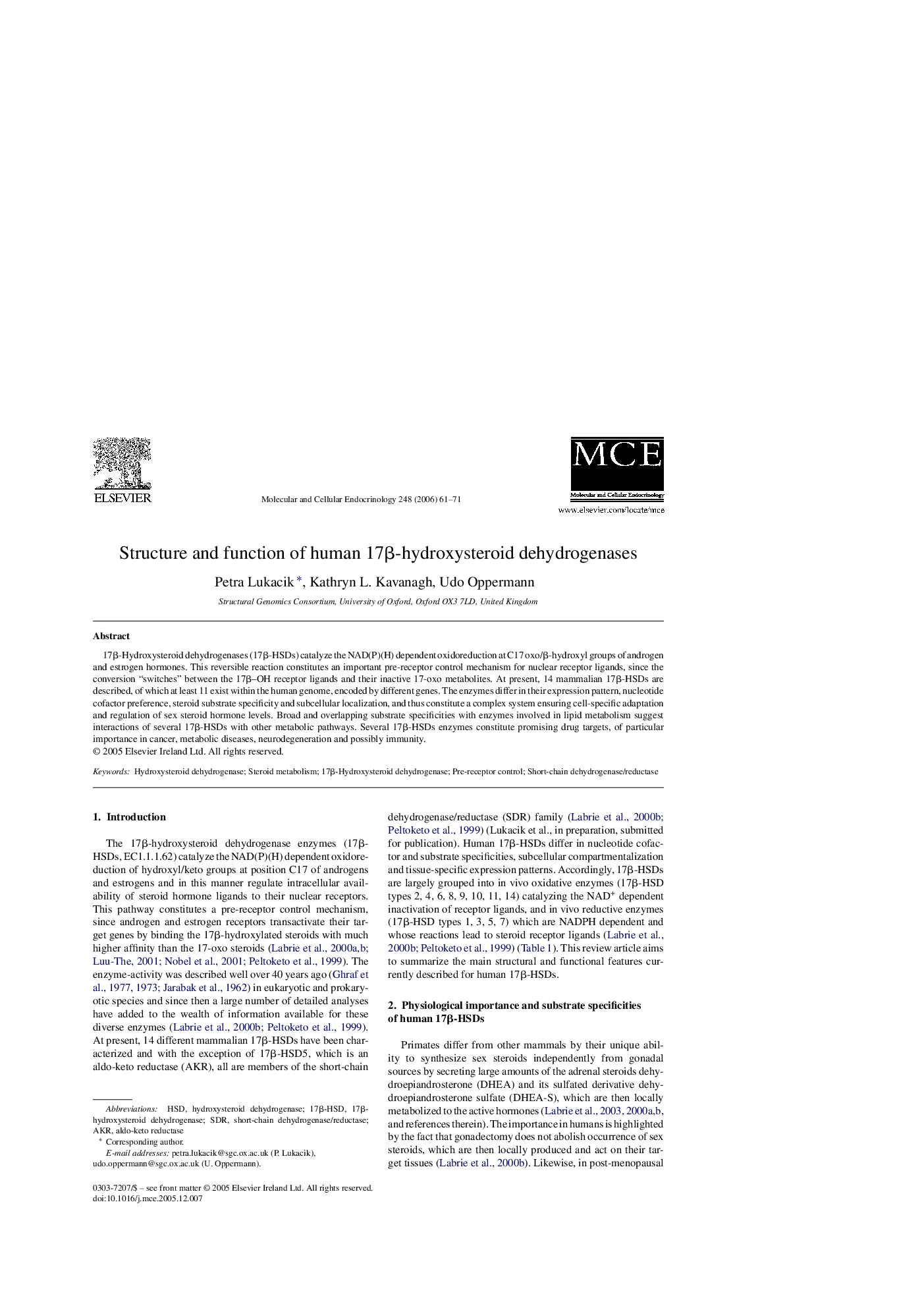| Article ID | Journal | Published Year | Pages | File Type |
|---|---|---|---|---|
| 2198319 | Molecular and Cellular Endocrinology | 2006 | 11 Pages |
17β-Hydroxysteroid dehydrogenases (17β-HSDs) catalyze the NAD(P)(H) dependent oxidoreduction at C17 oxo/β-hydroxyl groups of androgen and estrogen hormones. This reversible reaction constitutes an important pre-receptor control mechanism for nuclear receptor ligands, since the conversion “switches” between the 17β–OH receptor ligands and their inactive 17-oxo metabolites. At present, 14 mammalian 17β-HSDs are described, of which at least 11 exist within the human genome, encoded by different genes. The enzymes differ in their expression pattern, nucleotide cofactor preference, steroid substrate specificity and subcellular localization, and thus constitute a complex system ensuring cell-specific adaptation and regulation of sex steroid hormone levels. Broad and overlapping substrate specificities with enzymes involved in lipid metabolism suggest interactions of several 17β-HSDs with other metabolic pathways. Several 17β-HSDs enzymes constitute promising drug targets, of particular importance in cancer, metabolic diseases, neurodegeneration and possibly immunity.
